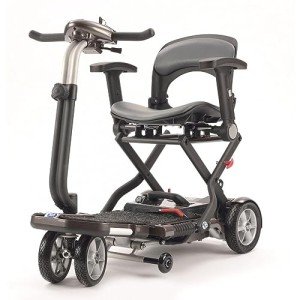Portable Mobility Scooters: Enhancing Freedom and Independence
As the world significantly moves towards inclusivity and ease of access, portable mobility scooters have emerged as an innovative solution for people with mobility difficulties. These compact, easy-to-transport scooters are created to empower users with the capability to navigate their environments with self-confidence and ease. In this post, we will check out the characteristics, advantages, and factors to consider when choosing for a portable mobility scooter, supported by tables and FAQs to provide a comprehensive summary.
Understanding Portable Mobility Scooters
Portable mobility scooters are lightweight, battery-operated cars that offer an alternative mode of transport for those with restricted mobility. Put together using durable materials, they are specifically engineered to be lightweight and compact to assist in simple transport in lorries or on public transportation.
Key Features of Portable Mobility Scooters
| Function | Description |
|---|---|
| Weight Capacity | The majority of scooters can support users weighing in between 250 to 500 pounds |
| Battery Life | Common range of 10 to 30 miles per charge |
| Speed | Normally runs between 4 to 8 miles per hour |
| Turning Radius | Varies from 32 to 60 inches, making them suitable for indoor usage |
| Foldability | Numerous designs can be easily folded for transportation |
| Wheels | Normally equipped with either solid or pneumatic tires |
Portable mobility scooters are ideal for both indoor and outside usage, providing stability and ease of motion.
Advantages of Portable Mobility Scooters
- Improved Freedom: Users can participate in activities that were previously tough, such as shopping and interacting socially, consequently improving overall lifestyle.
- Transport Convenience: Many portable scooters can be easily taken apart or folded, allowing users to carry them in cars and trucks, vans, or public transport.
- Affordable: Compared to powered wheelchairs, portable scooters are typically cheaper, offering a cost-effective solution.
- User-Friendly Design: Most designs include intuitive controls, making them simple to operate for individuals of all ages.
- Variety of Options: With many brand names and models on the market, potential users can choose scooters that suit their specific needs-- ranging from off-road usage to compact indoor alternatives.
Important Considerations When Choosing a Portable Mobility Scooter
- Weight and Portability: Assess the weight of the scooter itself and its parts. Lighter designs are typically easier to carry.
- Battery Life and Range: Consider how far you need to travel on a single charge. If you prepare for long journeys, a scooter with an extended battery life is important.
- Size and Dimensions: Measure where you'll keep the scooter and ensure it fits conveniently in your lorry or home.
- Convenience Features: Look for scooters with adjustable seats, armrests, and other ergonomic features for added comfort during usage.
- Terrain Compatibility: If you plan to utilize the scooter outdoors, guarantee it can handle numerous surfaces (e.g., gravel, yard) with ease.
| Factor to consider | Significance |
|---|---|
| Weight & & Portability | Affects ease of transportation and storage. |
| Battery Life | Figures out range and liberty to check out. |
| Size | Important for storage and maneuverability. |
| Convenience Features | Boosts the general user experience. |
| Terrain Compatibility | Ensures adaptability in outdoor conditions. |
Frequently Asked Questions (FAQs)
1. How quick can a portable mobility scooter go?
Many portable mobility scooters can reach speeds in between 4 to 8 mph. However, the speed may differ based upon the design and the weight of the user.
2. Do portable mobility scooters need a license or registration?
In many nations, portable mobility scooters do not need a chauffeur's license or registration, however it's vital to inspect local guidelines.
3. What is the normal price variety of portable mobility scooters?
Prices generally range from ₤ 600 to ₤ 3,000 or more, depending on features, brand name, and specs.
4. Can portable mobility scooters be used on mass transit?
Yes, lots of public transportation systems accommodate portable mobility scooters, but it's advisable to sign in advance relating to policy information and area constraints.
5. What are the maintenance requirements?
Routine upkeep consists of battery checks, tire assessments, and keeping the scooter tidy. More Support 's recommended to consult the user handbook for specific upkeep guidelines for your design.
Portable mobility scooters have ended up being a lifeline for numerous individuals seeking independence and mobility in their lives. Their benefit, ease of usage, and range of offered models permit users to pick the best scooter to fit their lifestyle.
For anyone thinking about buying a portable mobility scooter, it's essential to examine individual needs carefully and check out different choices on the market. With the ideal option, these scooters can considerably enhance mobility and assist in a more active lifestyle, eventually causing enhanced health and health and wellbeing.
By understanding the features and factors involved in selecting a portable mobility scooter, users can take the initial step towards claiming their liberty once more. Whether for running errands, enjoying the outdoors, or just moving the home, portable mobility scooters redefine what it indicates to remain active and engaged in life.

